This blog post will explore everything from the root causes of seasickness to practical prevention techniques and accessible treatment options. Whether you’re a seasoned cruiser or planning your first family voyage, these tips on how to avoid seasickness will help you make the most of your time at sea without unwanted queasiness.
Sailing can be peaceful and magical, but if you’re green, it is not fun. Don’t let your fear of seasickness ruin your cruise or sail.
Ah, the open sea—a place full of adventure, beautiful sunsets, and the mystery of the endless horizon. But for many, it’s also the realm of an unwelcome guest: seasickness. For frequent travelers, cruise enthusiasts, and family travelers alike, understanding and managing seasickness can turn a potentially rocky voyage into smooth sailing.
Seasickness is feeling sick because of the rolling movement of the boat or ship. Physiologically, seasickness occurs when there is a difference between the movement you perceive visually and the movement the vestibular system is sensing.
The vestibular system provides you with your sense of balance and spatial orientation (which is the awareness of whether you are upside down or right side up). So, when the vestibular system tells the brain that you are moving, but the eyes tell the brain that you are not, the mind becomes confused, and symptoms of seasickness or motion sickness occur.
While anyone can experience seasickness, some individuals are more susceptible than others, including those who are particularly sensitive to motion or have a history of motion sickness in cars or airplanes. I have lots of tips on how to avoid seasickness; I have tried them all. Plus, some easy and accessible ways to treat.
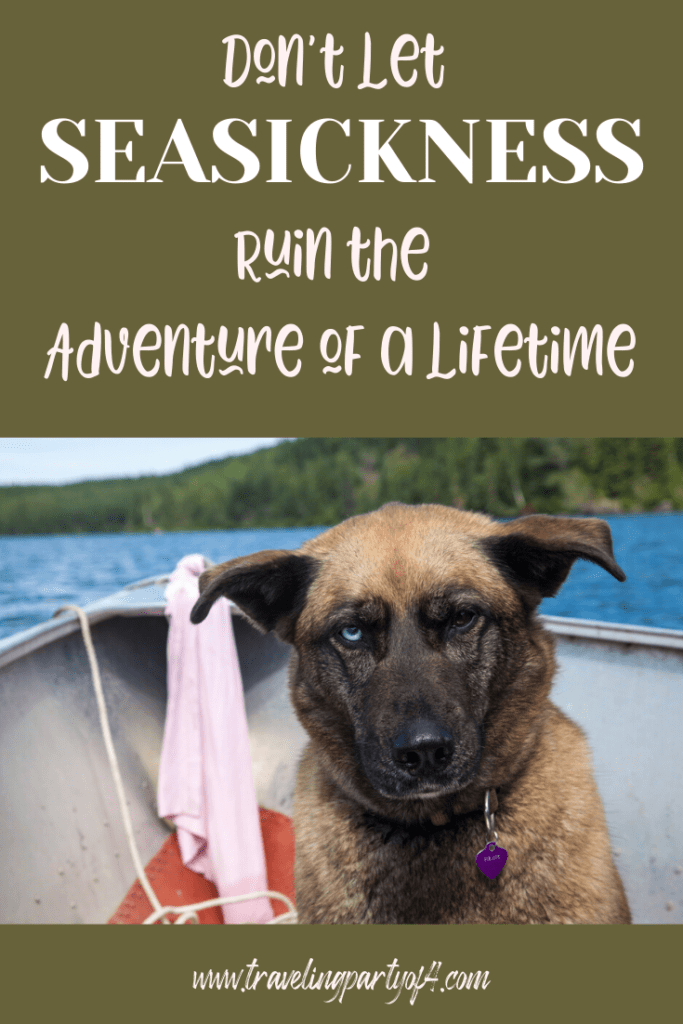
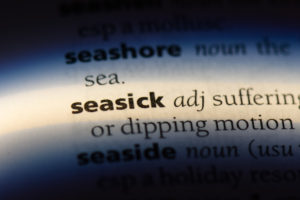
Ugh! Nothing like that feeling.
Who is at risk for developing seasickness?
Environmental factors play a significant role in triggering seasickness. Rough waters or sudden changes in direction can confuse your body’s balance system, leading to the all-too-familiar symptoms of dizziness, nausea, and vomiting. Physical factors, such as fatigue or hunger, can exacerbate the condition, making it even harder to enjoy your oceanic experience.
Psychological factors also come into play. Anxiety about traveling or being on water can prime your body to react negatively to motion. Being aware of these triggers allows you to prepare and take proactive steps to prevent seasickness before it starts.
Setting Sail with Confidence…How to Avoid Seasickness
To ensure smooth sailing from start to finish, consider implementing a few tried-and-true seasickness prevention techniques. Choosing the right cabin can make a world of difference. Opt for a room near the middle of the ship, where the motion is least felt, and ensure it has a window to visually anchor yourself to the horizon.
Dietary considerations, such as light, non-greasy meals, can help keep nausea at bay. Ginger, in particular, is a natural remedy praised for its anti-nausea properties. Sipping ginger tea or nibbling on ginger candies before setting sail might keep queasiness at arm’s length.
Natural remedies, including acupressure wristbands and essential oils like peppermint or lavender, have been used for centuries to combat motion sickness. These holistic approaches can provide relief and comfort without the side effects of traditional medications.
An ounce of prevention is worth a pound of cure.
We’ve all heard that Proverb, and as with anything in medicine, preventing seasickness before it occurs is easier and way more effective than trying to alleviate the symptoms once they start.
#1 Arrive at the boat healthy.
Start your day by heeding this advice:
- DO NOT tie one on the night before your sail. Starting with a hangover will almost guarantee you will experience seasickness.
- Get a good night’s sleep.
- Arrive well-hydrated.
- Eat a good breakfast, but don’t stuff yourself, and avoid greasy foods. Try a smoothie or oatmeal with fruit, toast, or even some pancakes (probably not with bacon).
If you are prone to seasickness, be mindful of the following eight recommendations:
Do Not:
- Go below deck.
- Do close work (for example, don’t read a book, kindle, iPad, or knit).
- Use binoculars.
- Get overheated.
- Drink alcohol (or at least moderate).
- Smoke.
- Overeat.
- Eat spicy/fatty/greasy foods.
Large cruise ships have stabilizers. The bigger the boat, the less rocking movement you will feel. The newer boats have even better technology when it comes to stabilizing the motion of the waves. Therefore, there is less of a chance of seasickness when compared to smaller boats. Unfortunately, this does not guarantee that you won’t experience seasickness.
Here are five simple recommendations on how to avoid seasickness on large cruise ships.
- Cabin choice: Book a cabin mid-ship, on the outer side with a window, or better yet, a balcony. There will be less movement on the inner portion of a cruise ship, but having no window may cause issues.
- Keep your eyes on the horizon.
- Try to stay on the deck where there is fresh air.
- Position your body straight ahead with the wind in your face. **You will be able to see the waves and swells that your body will feel; this will make more sense to your vestibular system, diminishing the seasickness symptoms.**
- Avoid areas with strong fumes, such as the back of the boat with diesel exhaust.
Consider the location of your voyage.
- Choose locations close to the coastline, such as an Alaskan Cruise.
- The Caribbean and Gulf of Mexico generally have calmer waters.
- River cruises should have minimal effect on your vestibular system.
- If you are prone to becoming seasick, avoid cruises crossing the Atlantic or Pacific for days. At least you will have ports of call in the Caribbean and Gulf of Mexico, and you can disembark to find some relief.
The Symptoms of Seasickness.

- Headache
- Dizziness
- Nausea
- Vomiting
- Malaise
- Loss of Appetite
- Increase Saliva Production
- Pallor
- Basically, it feels like an epic hangover.
There are multiple ways to avoid seasickness and treat the symptoms once they occur.
My career as an Oncology Nurse for almost thirty years and a Chemotherapy Infusion Nurse for about ten of those thirty years has provided me with plenty of experience with pharmaceuticals as well as comfort measures for nausea.
However, my career is not what makes me an authority on managing nausea. What makes me an authority is my family’s genetics and my personal experience with seasickness and motion sickness in general.
Both my husband and I did 23 & Me. Not only does 23 & Me provide ancestry information, but it also includes information on health, wellness, traits, and carrier status of many genetic diseases.
~Here is me!~
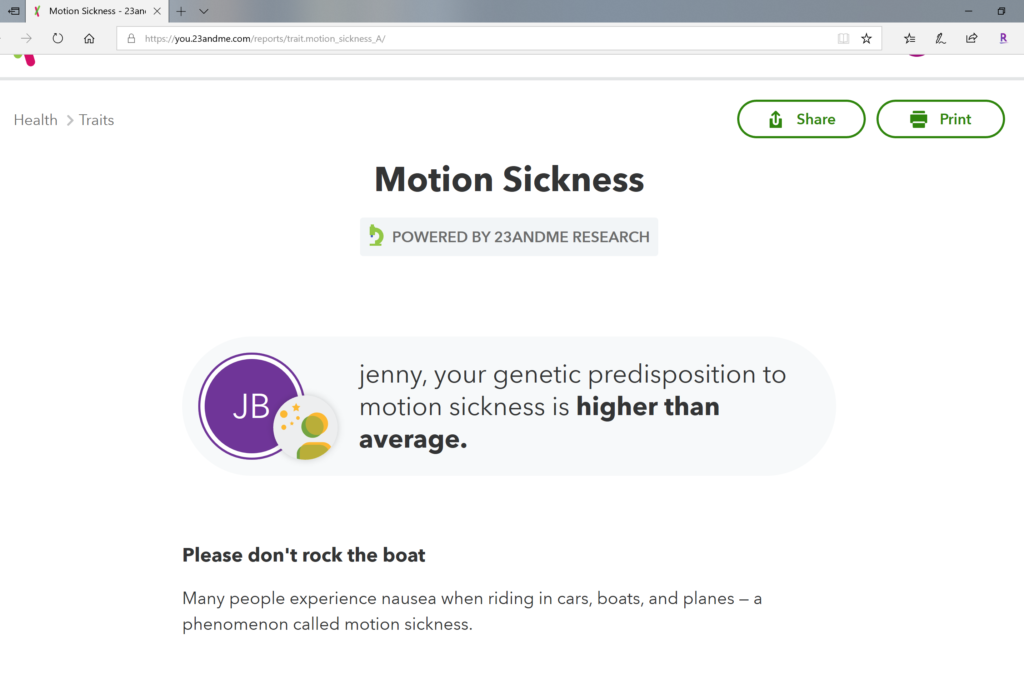
~Here is my husband.~
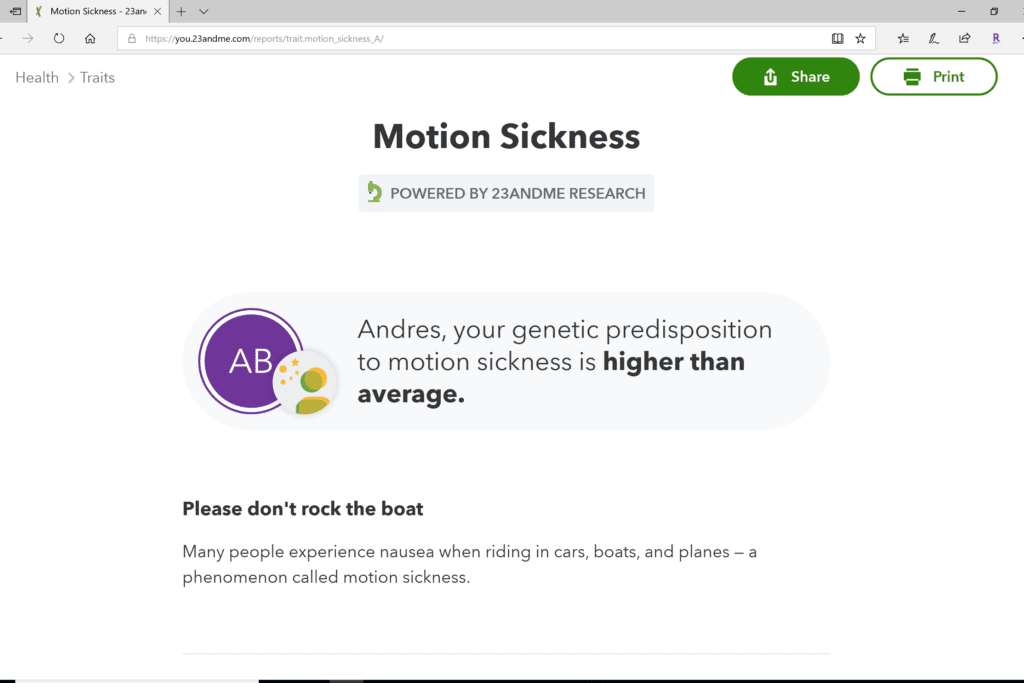
You don’t have to be a Geneticist to understand how this may affect my kids. Such is my life!
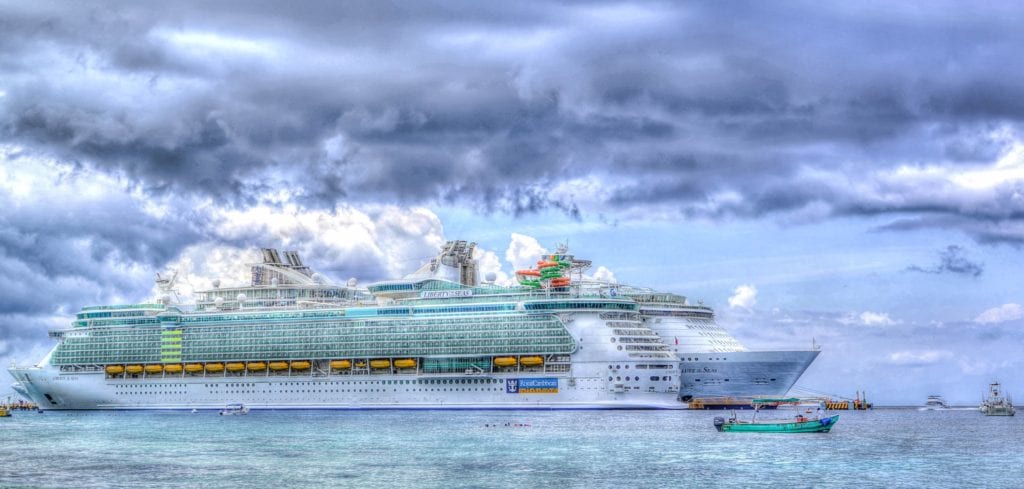
**The advice and information I will provide should not replace your Physician’s advice or treatment recommendations. If you genuinely suffer from seasickness, talk to your medical provider about interventions that will help you combat seasickness so you can enjoy your vacation.**
There are multiple interventions for treating seasickness once it occurs.
Despite your best efforts, seasickness may strike. Luckily, there are several easy ways to treat seasickness effectively. Acupressure, applied through wristbands or specific pressure points, can quickly alleviate nausea and bring relief during turbulent moments.
Over-the-counter medications, such as Dramamine or Bonine, are staples in any traveler’s toolkit. These medications are designed to prevent and treat motion sickness symptoms, allowing you to focus on the joys of your trip rather than discomfort.
Lifestyle adjustments, like staying hydrated and getting plenty of rest, can also contribute to a more enjoyable voyage. Sometimes, simply stepping outside for fresh air or focusing on the horizon is enough to quell a queasy stomach.
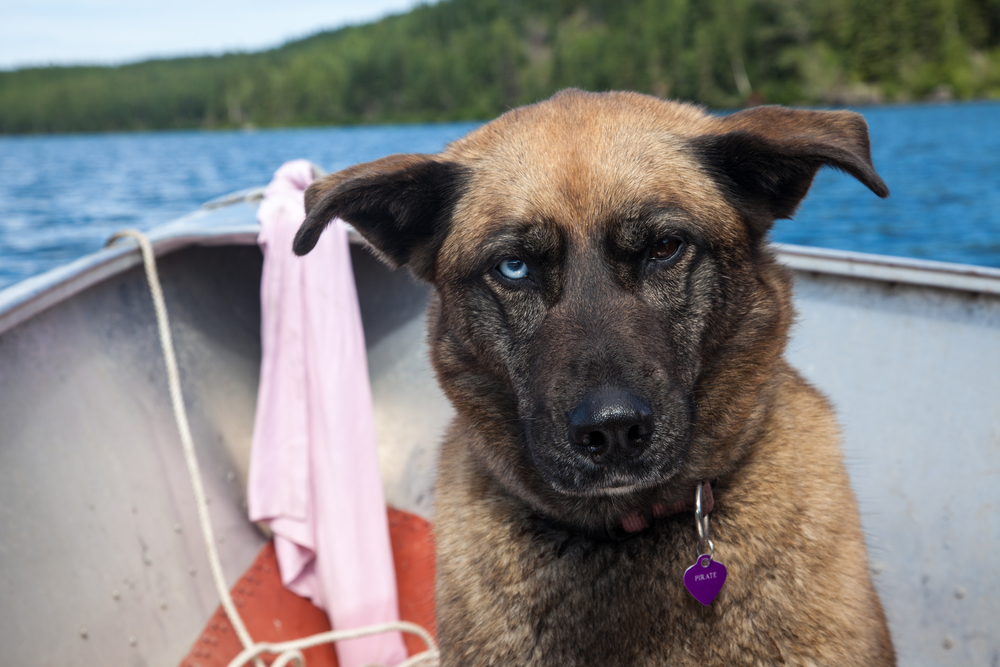
10 Natural Comfort Measures.
- Lie completely flat with eyes closed; this is how my daughter manages when she starts getting that feeling.
- Face forward or towards the direction of the most considerable motion. Get in front of the boat and watch the waves. This way, you will see the waves coming, and your body will anticipate the motion and ride the waves. My remedy of choice is to be one with the waves!
- Stay hydrated. Drink plenty of water.
- Ginger is amazing. Ginger Ale, Ginger Beer, Ginger Candy, Ginger Tablets. Buy them all and have them on hand.
- Ginger Essential Oil in a Diffuser or Ginger Tummy Rub.
- Sea-Bands using acupressure work for some people.
- Try to keep something on your stomach. Graze on healthy snacks. If someone offers you a green apple, take it and eat it.
- Hard candies such as peppermints and lemon drops soothe the stomach.
- If you can, pilot the vessel, kind of like when you drive a car to avoid carsickness; this may help psychologically because you are more in control. Plus, your mind is on being the driver and not your symptoms.
- I have read some anecdotal studies proving that Vitamin C helps. It did not help me.

When nothing is working, try pharmaceuticals.
- Dramamine helps but causes drowsiness, often severe.
- Bonine, same issue, drowsiness. But helps.
- Scopolamine Patch “scop patch” is a prescription medication patch that you place behind your ear. You must remove it and reapply it every three days. Side effects of the patch include vertigo, dry mouth, confusion, dizziness, and difficulty urinating. Also, avoid coming in contact with the ingredient in the patch and rubbing your eyes as they will dilate, and maybe only one pupil will dilate, which can confuse a physical exam.
- Zofran (ondansetron) is the only medication that we have relief with and has few side effects. Zofran is also a prescription medication you will need to obtain from your Physician. You can take Zofran every 6-8 hours as needed.
**If you are prone to motion sickness/seasickness, begin these medications the day before your voyage and take a dose the morning of departure; this will help build up a decent blood level of the drug so it is “on board” when you board. Then, you will not have to wait for the therapeutic effect to kick in.
**If you decide to use Dramamine or Bonine on your voyage, try it a week or so before your trip. Give it a dry run, so to speak. They can both make you tired, and you don’t want to start your cruise or your sail asleep. If they cause too much drowsiness, try something else.
**If someone suggests something silly, like putting sugar in your belly button or salt under your tongue, try it. You never know what may work for you.
Cruising with the Little Ones Special Considerations for Kids
A few more bits of advice on managing seasickness, and then it’s a wrap.
Traveling with kids on a cruise adds a delightful yet challenging dimension to your adventure. Children often have difficulty articulating their discomfort, making it essential to monitor them closely for signs of seasickness, such as paleness or lethargy.
To prevent seasickness in children, maintain a consistent meal schedule with light, non-greasy foods. Encourage frequent outdoor breaks so they can breathe fresh air and watch the waves, helping their bodies adjust to the motion of the sea.
When seasickness does occur, simple distractions like games or storytelling can keep their minds off their symptoms. Small sips of water or ginger ale can also soothe an upset stomach. Remember, patience and empathy go a long way in ensuring everyone enjoys the voyage.
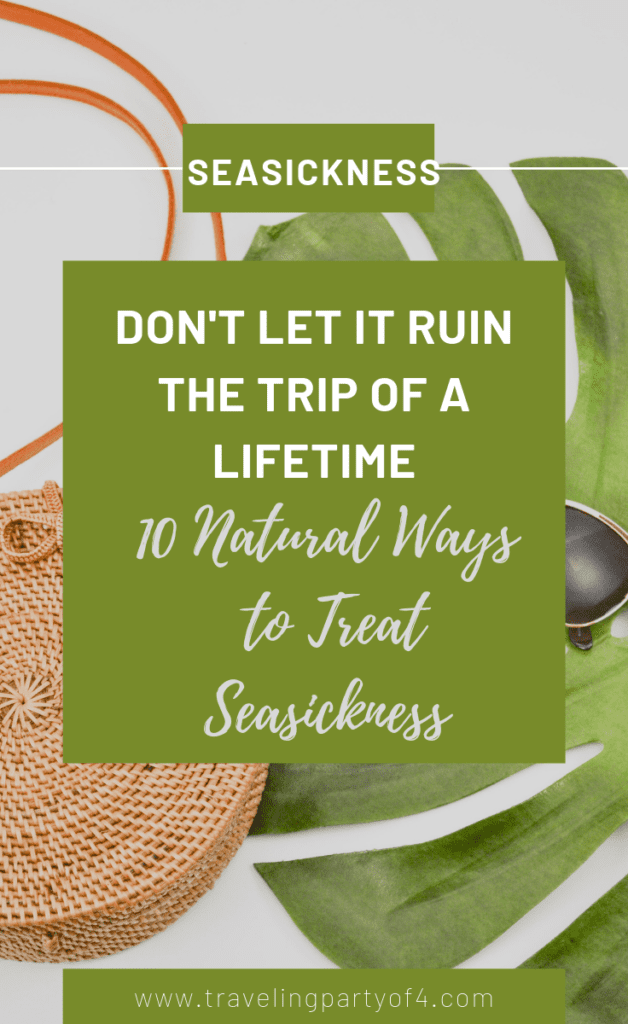
Navigating the High Seas with Ease
With knowledge and preparation, seasickness doesn’t have to dampen your cruising adventures. By understanding the causes and implementing effective prevention techniques, you can minimize your risk and enjoy your time at sea.
Every traveler’s experience is unique, and combining different methods might be the key to a peaceful voyage. Whether you’re a frequent traveler, a cruise enthusiast, or a family looking for new adventures, these tips will help ensure a pleasant and memorable experience.
Knowing how to avoid seasickness is critical because once it occurs, it is tough to beat. However, it usually takes about two days to get your sea legs. Your symptoms will then subside. So, if nothing helps, it will run its course most of the time.

Sailing the British Virgin Islands has been our favorite holiday. With the above interventions, I have conquered seasickness and I now love the islands.


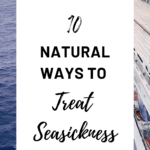

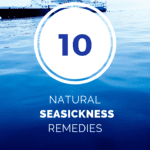
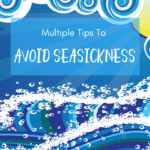


All good advice I used to suffer really bad with sea sickness I often found standing on the deck helped me but I eventually grew out of it
I have read that people grow out of it. I sure have not, I just have to make sure that I avoid it. I definitely know now what works and what makes it worse.
The hubby and I have have been on several cruises. Only once did I get queasy. Fortunately, my husband was in the Navy and knows how to avoid seasickness. You have some really great ideas here. But I want to echo that prevention is really the key!!
I agree 100% with prevention. It is rough to deal with once it happens. I would love to hear your husband’s advice or tricks to avoid it.
My husband swears by ginger, and starts taking capsules a couple of days before we sail on a cruise. That and Sea Bands seem to keep him together, but we carry Bonine just in case. Thanks for sharing about the essential oils… we use them religiously at home but never thought to pack them for a cruise.
I haven’t used essentials on cruises yet, I will next time. They are great for so many things. That is a great idea to start taking ginger several days before. I think I will add that in!
The 1st cruise I went on, we set sail on my birthday from Soton in the winter…to celebrate I got plastered. And the next day I woke up in a world of pain, learning all about the wrath of the Bay of Biscay (which I’ve been calling ‘Biscus’ until I checked my facts before leaving this comment)! Anyway, breakfast was interesting! And then I stumbled off to find the ship hospital and ended up trying to get in the ship prison. I was definitely not where I should have been and got a telling off. I located the hospital and nearly threw up again when they told me the price of anti-sickness relief drugs they could inject into my arse. FORGET THAT! So I opted for hair of the dog! Wish I’d have read this before I set sail! Great article…
You are so funny. That sounds horrible. I guess I should have included hair of the dog. Ugh! How miserable. First things first, don’t tie one on the night before you board!!
I might be a cruise-novice but I am a hangover-pro! Hair of the dog HAS to be on the list, especially as ‘cocktail of the day’ needs to be tested multiple times of every day!
I remember as a kid getting seasick and we used to travel a lot from Ireland over to Scotland on the boat – it was the worst!! This is a great list of things that I didn’t know to do back then – defo pinning this for later in case my daughter struggles with it 😬😬
Yep, you may have that gene, too. My kids didn’t have a chance! We all get motion sick and seasick. Blahhhhh
Great advice! I went on a cruise when I was 3 months pregnant one time. There was an earthquake by the Samoan islands and our boat was in the Pacific ocean. The waves got so bad that if you looked out the window you would be looking down at the ocean and then up at the sky and then back down again. You couldn’t even walk in the hallways for a whole afternoon/evening so everyone stayed in their rooms. I was throwing up so badly. The phone for room service was busy all night. There were tsunami warnings. It was crazy!
This is a terrible story. I can’t imagine. I don’t think any of these tricks would help in that situation! Wow!
Such a informative and helpful piece. My daughter gets motion sickness if in the car for more than 20 mins and if on a boat that is docked. And I have found for myself the older I get the more sea sick I get. I have never thought to take the Bonine ahead of time. Great tip! Thanks
Just be mindful that the Bonine can make you drowsy. It does work, though. It is really miserable to have issues with motion sickness. We all do! Ugh. And Good Luck.
Great post I never have gotten seasick before I hope I don’t start now.
You are so lucky. WE all get seasick, it can be miserable.
Getting sea sickness on a cruise would be a nightmare, I love your natural remedies which are fantastic alternatives. I’ve always got some sea sickness tablets in my medical kit just in case. Great article.
Thank you. It really can ruin your day! But, can be avoided most of the time.
Great tips and those Gin-Gins are yummy 🙂 I’m lucky to never have experienced sea sickness on a cruise ship but it does hit me on smaller boats which makes scuba diving sometimes a challenge. I’ll keep these recommendations in my mind for the next time onboard!
I am usually ok on a cruise. But, oh how many times have I puked in a regulator. So bad and sad! I have learned how to avoid it, but every now and then, still sneaks up on me.
Never been on a cruise yet but I’ve been on boats and ferries and had no motion sickness so I hope I’ll be fine on a cruise when that happens. Also, I’d never take a room below as I want a porthole for sanity.
I am serious about that porthole and sanity! Agree. You should be fine on a large cruise ship if you are on a small boat, I am guessing.
Although we are yet to do a cruise, one thing that has been putting me off has been the fear of seasickness in both myself and our son. These are great tips should we ever book one!
I can be miserable. The first cruise I went on was one of those 3 day treks. I did perfectly fine so our next one was a little longer. It can be avoided, but once it hits, it is no fun.
Great article! While I personally don’t get seasick, I know quite a few people who do; this is a must-read for all of those individuals as no one wants to spend precious trip time sick.
Not at all, it can ruin your day. But, can be avoided and treated, most of the time. You are so lucky to not have this issue.
I have been there before! I had the worst sea sickness traveling from Colombia to Panama, but it was on a very tiny sailboat. When I have been cruising on large cruise ships, I have always been fine, luckily. Thanks for all these tips.
Sailboats can be rough. Been there. But, I learned how to avoid it and we have spent the past two summers on a sailboat in the Caribbean, and for the most part, I was ok!
Wow im so glad you talked about this, there are so many people (me including) who go through this. Super informative and helpful
Thank you. I hope it is helpful. It took me a while to figure out what works for me.